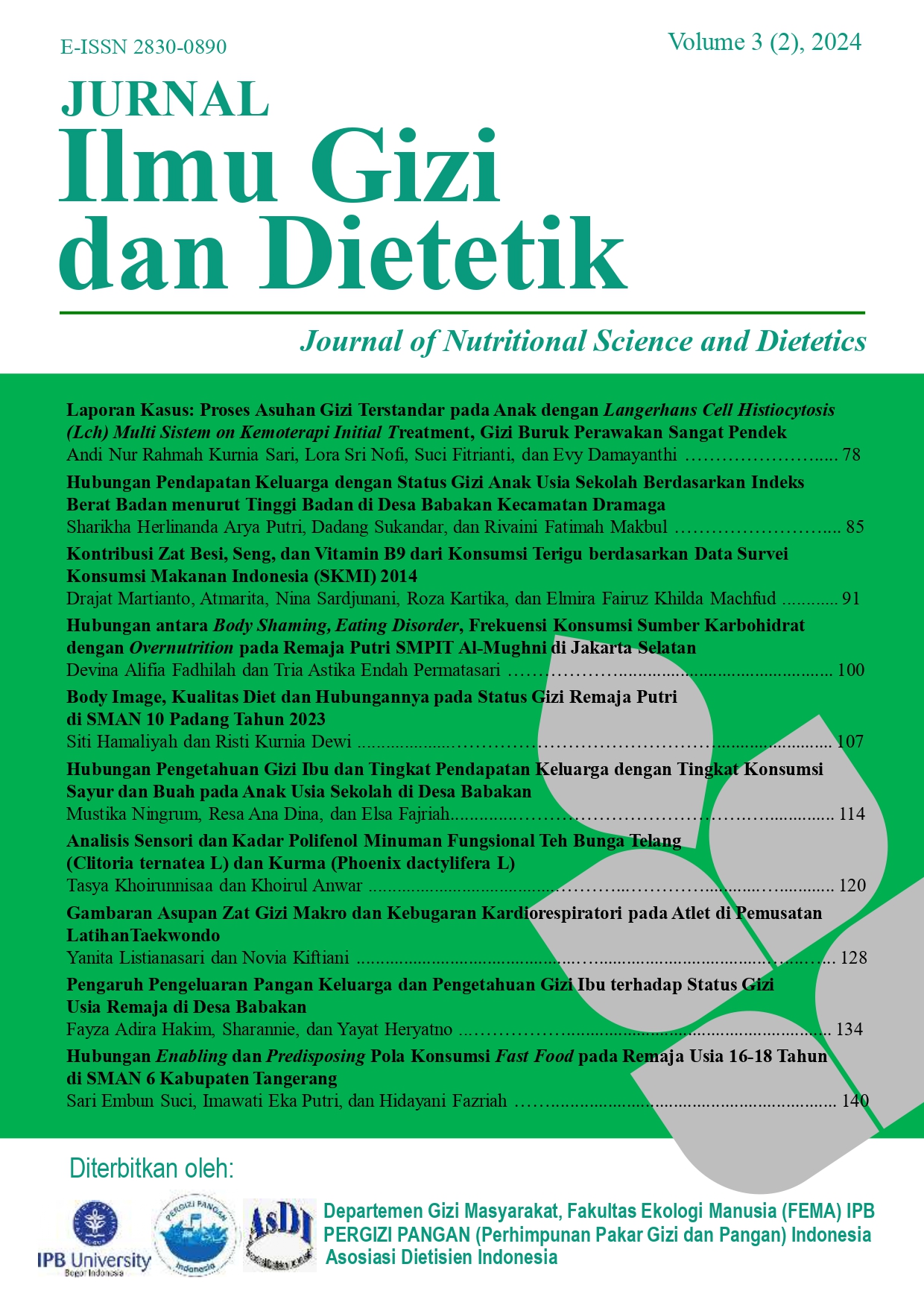Hubungan Enabling dan Predisposing Pola Konsumsi Fast Food pada Remaja Usia 16-18 Tahun di SMAN 6 Kabupaten Tangerang The Relationship of Enabling and Predisposing Fast Food Consumption Patterns in Adolescents Aged 16-18 years at SMAN 6, Tangerang District
Abstract
The tendency of shifting consumption patterns from traditional foods to imported or modern foods such as fast food is evident in urban communities today. Therefore, the issue to be examined in this study is the factors influencing adolescent consumption patterns. In this research, a cross-sectional methodology was employed with sample collection using purposive random sampling, involving a total of 108 subjects. Data analysis was carried out descriptively using Microsoft Excel and inferentially using SPSS version 25 for Windows, with statistical testing performed using the chi-square test. Research findings revealed that 77.8% of respondents frequently utilize social media, 54.6% have a large allowance (>Rp. 20,000), 65.7% exhibit hedonistic lifestyles, 57.4% possess good nutritional knowledge, and 52.8% frequently consume fast food. Bivariate analysis indicated a significant relationship between social media usage, allowance size, and hedonistic lifestyle with fast food consumption patterns among 16-18-year-old adolescents at SMAN 6 Kabupaten Tangerang (p-value<0.05). The conclusion drawn from this study is that there exists a correlation between social media usage, allowance size, and hedonistic lifestyle with fast food consumption patterns among 16-18-year-old adolescents at SMAN 6 Kabupaten Tangerang.

